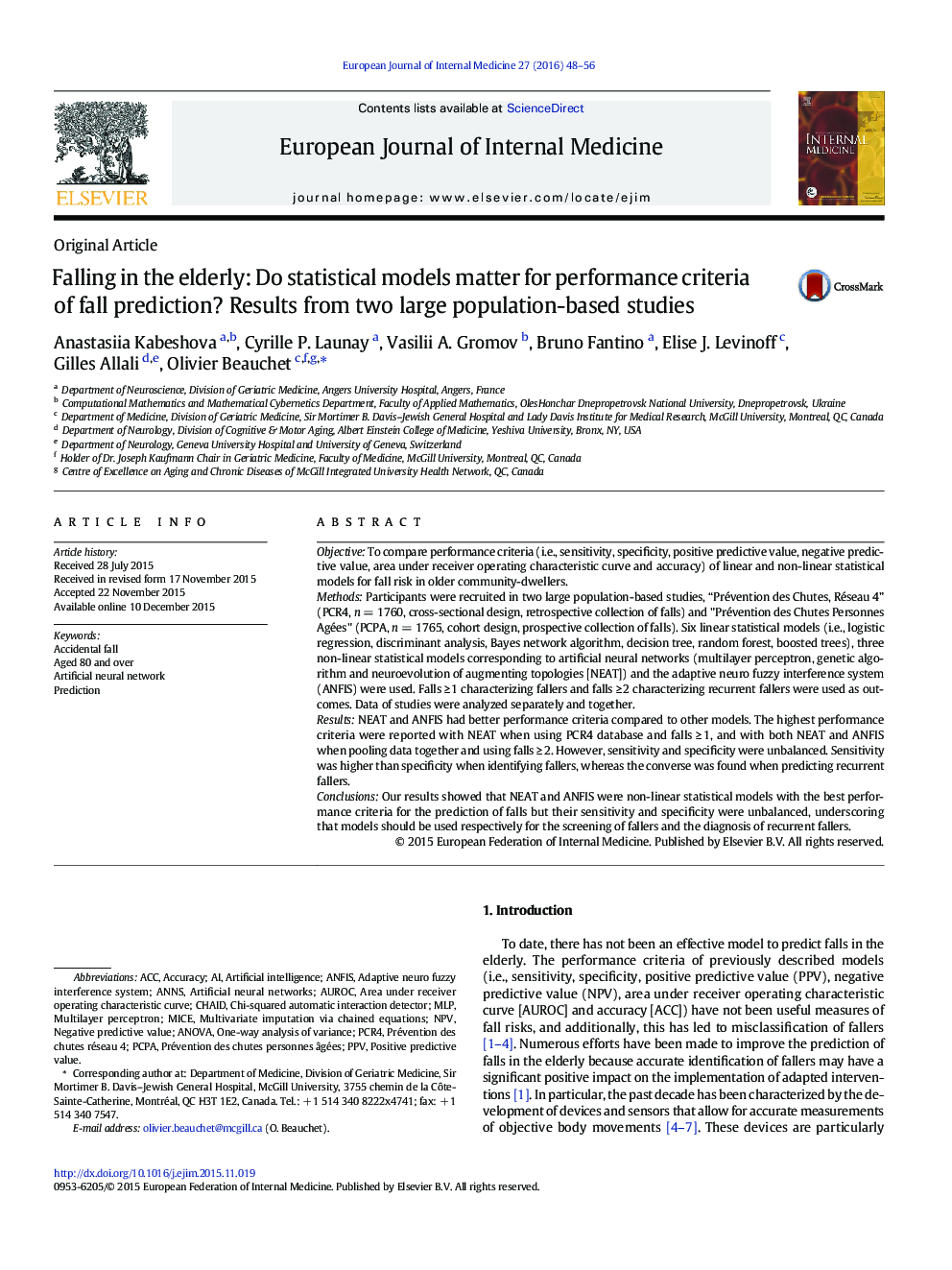| Article ID | Journal | Published Year | Pages | File Type |
|---|---|---|---|---|
| 3466008 | European Journal of Internal Medicine | 2016 | 9 Pages |
•An efficient fall prediction in older adults remains a challenge.•Artificial neural networks have the greatest performance criteria for fall prediction.•Sensitivity and specificity of artificial neural networks were unbalanced.•Neuroevolution of augmenting topologies should be used for the screening of fallers.•Adaptive neuro fuzzy interference system should be used for the diagnosis of recurrent fallers.
ObjectiveTo compare performance criteria (i.e., sensitivity, specificity, positive predictive value, negative predictive value, area under receiver operating characteristic curve and accuracy) of linear and non-linear statistical models for fall risk in older community-dwellers.MethodsParticipants were recruited in two large population-based studies, “Prévention des Chutes, Réseau 4” (PCR4, n = 1760, cross-sectional design, retrospective collection of falls) and "Prévention des Chutes Personnes Agées" (PCPA, n = 1765, cohort design, prospective collection of falls). Six linear statistical models (i.e., logistic regression, discriminant analysis, Bayes network algorithm, decision tree, random forest, boosted trees), three non-linear statistical models corresponding to artificial neural networks (multilayer perceptron, genetic algorithm and neuroevolution of augmenting topologies [NEAT]) and the adaptive neuro fuzzy interference system (ANFIS) were used. Falls ≥ 1 characterizing fallers and falls ≥ 2 characterizing recurrent fallers were used as outcomes. Data of studies were analyzed separately and together.ResultsNEAT and ANFIS had better performance criteria compared to other models. The highest performance criteria were reported with NEAT when using PCR4 database and falls ≥ 1, and with both NEAT and ANFIS when pooling data together and using falls ≥ 2. However, sensitivity and specificity were unbalanced. Sensitivity was higher than specificity when identifying fallers, whereas the converse was found when predicting recurrent fallers.ConclusionsOur results showed that NEAT and ANFIS were non-linear statistical models with the best performance criteria for the prediction of falls but their sensitivity and specificity were unbalanced, underscoring that models should be used respectively for the screening of fallers and the diagnosis of recurrent fallers.
